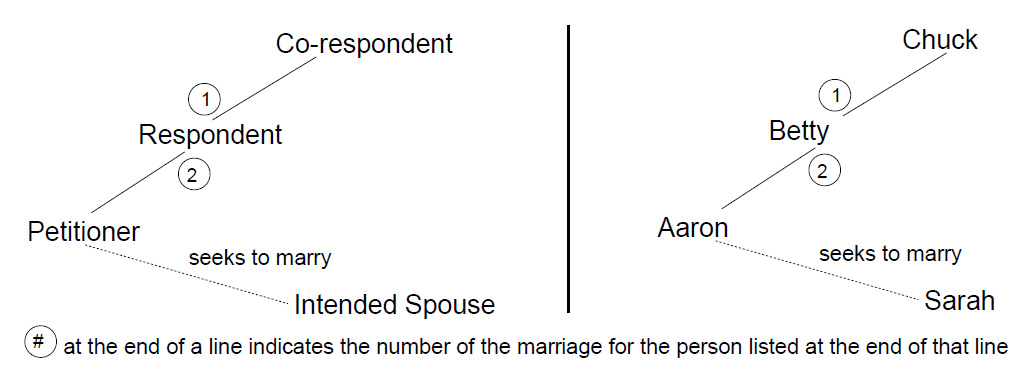The Catholic Church teaches that in order to be free to enter into marriage, a person may not have an impediment (obstacle) which prevents that person from entering into a valid marriage. One of the impediments to marriage is that of a prior bond that has not been resolved by a marriage tribunal. If a person has a prior valid bond of marriage, one that has not been declared null, then that person is not free to marry another as long as the previous valid bond exists. This obstacle of a prior bond preventing one from entering into a second valid marriage is known as the impediment of ligamen. If the impediment of ligamen (prior bond) exists and a person attempts marriage to a second spouse, the second marriage is invalid due to the existence of the impediment.
The Church provides for a process which is used to establish the invalidity of a second (or later) marriage due to the impediment of ligamen. This would be done in the case where the second spouse now desires to enter into a valid marriage in the Catholic Church. The person seeking the decree of invalidity for his/her marriage due to a prior bond on the part of his/her spouse is known as the Petitioner. The ex-spouse of the Petitioner is known as the Respondent. The prior spouse of the Respondent is known as the Co-Respondent. In the example below, the impediment of ligamen arises from the marriage of Betty and Chuck, thus preventing Betty from entering into a valid marriage with Aaron. Thus, Aaron is free to marry Sarah.

The ligamen process seeks to obtain documentary evidence to establish the fact of the impediment of ligamen, i.e., that the Respondent was in a valid prior bond throughout the duration of the Petitioner-Respondent marriage and so was not free to marry the Petitioner. Thus, the Petitioner would be free to enter into a new marriage now. The information necessary as documentary evidence consists of written documents and testimony of witnesses who can corroborate the information provided by the Petitioner. If the required documents and testimony are obtainable, this is generally a shorter process than pursuing the former marriage as an annulment case. As the ligamen process is begun, if it is found that the necessary documents are not obtainable, then the process seeking to declare the marriage of the Petitioner and the Respondent invalid would need to be changed to a formal annulment case, if there are adequate reasons to support seeking the declaration of nullity.